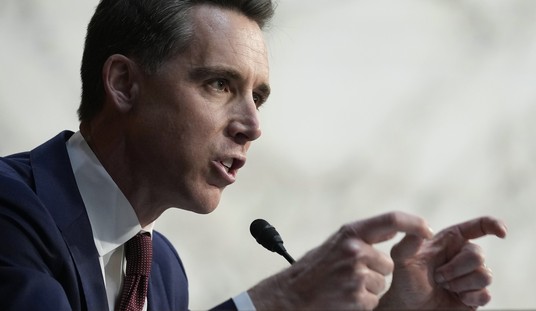“Paging the Onion … Do we really need a national weather service? (From FOX News, of course).”
This is a tweet from Eric Boehlert, who works for the George Soros-funded Media Matters for America website.
There’s a hurricane bearing down on us, he was saying last Saturday, and the idiots on the FOX News are running stories asking whether we need the National Weather Service. So silly it deserves its own story in the Onion.
Well, do we need a National Weather Service?
The most popular site on the web for weather is weather.com, run by the Weather Channel. The National Weather Service, a $1 billion-per-year federal agency, is right next door at weather.gov. From Tuesday through Sunday – the high-water period for Irene watching – did you ever once go to weather.gov for storm information?
Few Americans did. In fact, weather.com had more than 3,000 times as many unique visitors as weather.gov. And anyone who didn’t get their information from one of those sites probably got it on television, where, again, the NWS played little or no role.
So what did NWS bring to the table? The National Hurricane Center? The NHS did fly atop the storm and broadcast some interesting images. But, really, those in the path of the storm need time frames and info on the path of the storm – and those images provided neither.
NWS did issue its various warnings and watches and advisories. But the warnings carry no force – it’s up to local governments to order evacuations, open shelters or impose curfews. And the advisories, warnings and watches basically tell us the storm is getting close, now closer, now so close it should be raining outside your door. In other words, information widely available elsewhere for free.
Recommended
Are perhaps the NWS’ forecasts more accurate? Because if they are – for hurricanes or blizzards or thunderstorms or tornados – that information could save lives, not to mention billions of dollars. But the leading authority in America on when and where storms will hit is Accu-Weather, a private concern.
It was Accu-Weather, not NWS, that first predicted Katrina would score a direct hit on New Orleans. It was Accu-Weather, not NWS, that led with predictions Irene would not prove the devastating monster others were proclaiming. It is Accu-Weather that answers the bell when local governments need localized forecasts on snowfall, rainfall and the like. NWS doesn’t even offer these services.
Most of us don’t need zip code-by-zip code weather information. We need to know roughly when the storm will arrive, when will it end, how hard will the winds blow and how much rain/snow/ice will fall. And we can get that info anywhere for free.
Nearly every TV station worth its signal has a Doppler radar and the capability to link to Dopplers at sister stations closer to the action. Private services, such as the Weather Channel, fill in the blanks with 10-day forecasts, coastal flood warnings and their own radar screens.
When weather is a story, as it was last weekend – a Rasmussen Poll says 81 percent of Americans were closely following Irene developments – the media is all over it. Weather people pull double duty. Programming is pre-empted. The beaches are more crowded than usual with reporters in rainsuits confirming that, yes, the beach is in miserable shape. Doppler images appear in the corner of every television screen.
And, when weather is not the story … well, then it’s time to take a look at the weather.gov site. It gives electronic life to the phrase “government issue.” The maps look as if they are designed for cartographers. The buttons on the side make clear this site is not for the casual user who just needs to know when the big storm will hit.
Which leaves us to ponder the obvious question: If the NWS site is not for those in the path of storms, who is it for? And why does it exist? We don’t need government to warn us of big storms. A sizable and healthy industry – buoyed, unlike NWS, with the latest in technology to both gather the information and distribute it – exists for this purpose.
There is a joke of Onion dimensions in this story. But it’s not the one Boehlert thinks. The joke, as always, is on American taxpayers, whose leaders continue to ignore reality and preserve these relics that few need and even fewer use.
Like Irene, NWS’ time has passed. It is time for it to go. No joking.
























Join the conversation as a VIP Member